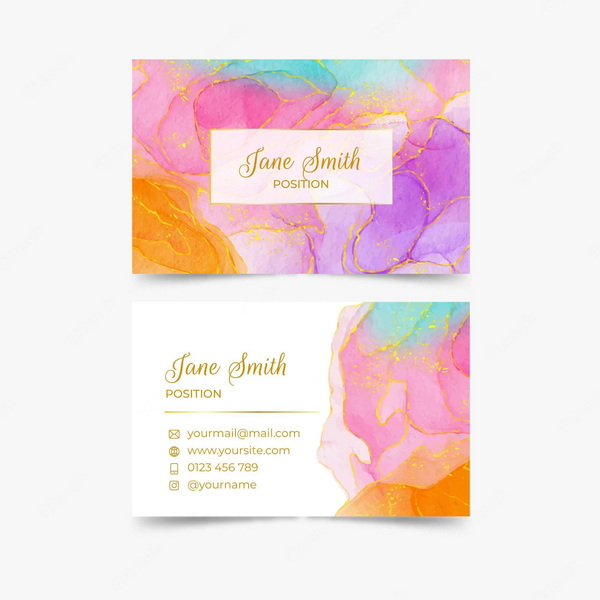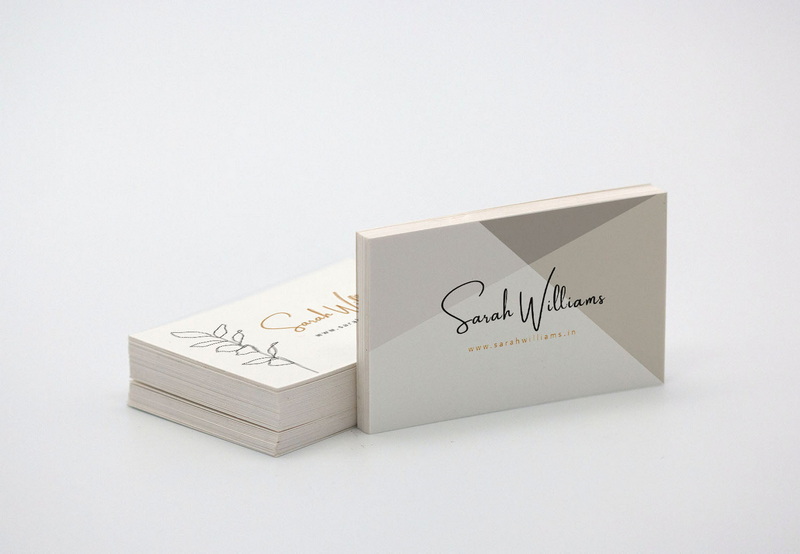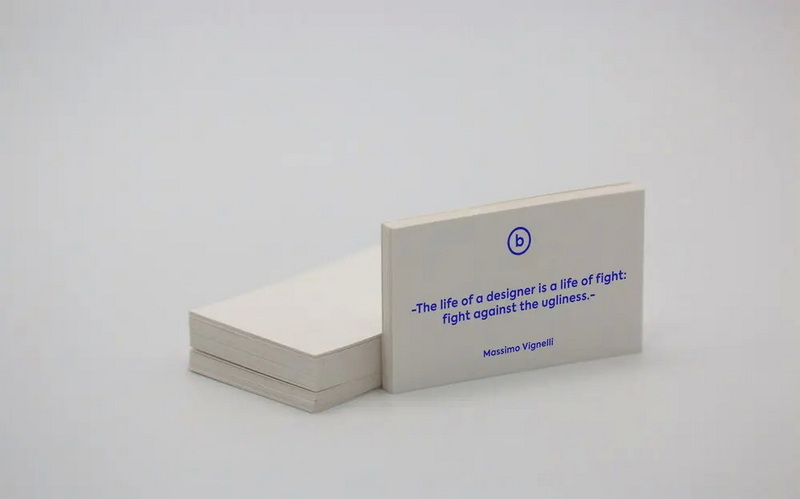Content Menu
● Standard Business Card Sizes: A Global Overview
>> North America: The 3.5" x 2" Standard
>> Europe: Slightly Taller and Narrower
>> United Kingdom: A Close Variation
>> Australia: Mirroring the European Standard
>> Japan: A Unique Standard
● Understanding Bleed and Safe Areas
>> Bleed Area: Extending Beyond the Trim
>> Safe Area: Keeping Content Within Bounds
● Alternative Business Card Sizes and Shapes
>> Square Business Cards: A Modern Twist
>> Mini Business Cards: Compact and Creative
>> Folded Business Cards: Extra Space for Information
● Design Considerations for Business Cards
>> Choosing the Right Material
>> Font and Typography
>> Color Palette and Branding
>> Minimalism vs. Maximalism
>> The Importance of a Call to Action
● Digital Business Cards: A Modern Alternative
>> QR Codes: Bridging the Physical and Digital
>> Virtual Business Card Platforms
● The Environmental Impact of Business Cards
>> Recycled Paper and Eco-Friendly Inks
>> Reducing Waste: Print on Demand
● Conclusion
● Frequently Asked Questions (FAQs)
>> 1. What is the standard business card size in the United States?
>> 2. What is the standard business card size in Europe?
>> 3. What is the bleed area on a standard business card?
>> 4. What is the safe area on a standard business card?
>> 5. What are some alternative business card sizes and shapes?
● Citations:
Business cards are more than just pieces of paper; they are tangible representations of your brand, your professionalism, and your attention to detail. In a digital age, the physical exchange of a business card can leave a lasting impression, making it a crucial networking tool. However, to maximize its impact, understanding the nuances of business card sizes, dimensions, and design considerations is essential. This comprehensive guide delves into the intricacies of business card sizes, exploring standard dimensions, variations across different regions, and key design elements to ensure your card stands out for all the right reasons.

Standard Business Card Sizes: A Global Overview
While the concept of a business card is universal, the specific dimensions vary across different regions. Knowing these variations is crucial, especially if you conduct business internationally.
North America: The 3.5" x 2" Standard
In the United States and Canada, the standard business card size is 3.5 inches by 2 inches (3.5" x 2") [3][5][7]. This rectangular shape is designed to fit easily into wallets, cardholders, and standard-sized sleeves. The dimensions translate to approximately 89 x 51 mm (millimeters) or 8.9 x 5.1 cm (centimeters) [5]. For digital design, this equates to 1050 px x 600 px (pixels) [5], ensuring a crisp, high-resolution image at a standard printing resolution of 300 DPI (dots per inch).
Europe: Slightly Taller and Narrower
European business cards often differ slightly from the North American standard. A common size is 85 x 55 mm (millimeters), which is approximately 3.35 x 2.17 inches [7]. This subtle difference can impact the layout and design of your card, so it's essential to be aware of it when doing business in Europe.
United Kingdom: A Close Variation
The standard business card size in the United Kingdom is 3.35" x 2.17" [7], which is very similar to the European standard. This size maintains the slightly taller and narrower profile compared to the North American standard, making it important to adjust designs accordingly.
Australia: Mirroring the European Standard
In Australia, the business card size typically aligns with the European standard of 85 x 55 mm (millimeters). This ensures consistency for businesses operating in both regions and simplifies the design process.
Japan: A Unique Standard
Japan has its own unique business card culture, and the standard size reflects this. Japanese business cards, known as "Meishi," are typically 91 x 55 mm (millimeters). This is slightly larger than the European standard, providing a more substantial feel and a different canvas for design.
Understanding Bleed and Safe Areas
When designing a business card, two critical concepts to grasp are "bleed" and "safe areas." These elements ensure that your final printed card looks professional and avoids any unintended cropping of essential information [3].
Bleed Area: Extending Beyond the Trim
The "bleed area" is the extra space extending beyond the final trim size of the business card [3]. This buffer zone compensates for slight movements during the cutting process. For a standard 3.5" x 2" business card, the bleed area typically adds an extra 1/8 inch (0.125") on each side, resulting in a design size of 3.75" x 2.25" inches [3]. Any background images or colors should extend into this bleed area to prevent white edges from appearing if the cut is not perfectly aligned.
Safe Area: Keeping Content Within Bounds
The "safe area" is the area inside the business card where all critical text and images should be placed [3]. It's a margin within the card's final dimensions, ensuring that no essential information is accidentally cut off during trimming. For a standard business card, the safe area should be at least 3.25" x 1.75" inches [3]. Keeping text and logos within this area guarantees they remain intact and legible.

Alternative Business Card Sizes and Shapes
While standard-sized business cards are the most common, exploring alternative sizes and shapes can help your card stand out and reflect your brand's unique identity.
Square Business Cards: A Modern Twist
Square business cards offer a contemporary and eye-catching alternative to the traditional rectangular shape. A common size for square business cards is 6.5cm or 2.55 inches on all sides [1]. This compact format is ideal for showcasing minimalist designs and bold graphics.
Mini Business Cards: Compact and Creative
Mini business cards, also known as "skinny" or "slim" cards, are narrower than standard cards, offering a unique and modern look. A typical size is 3.5" x 1.25" inches [7]. These cards are perfect for highlighting a few key details and creating a memorable impression.
Folded Business Cards: Extra Space for Information
Folded business cards provide additional space for including more information, such as services offered, appointment reminders, or a mini-portfolio. When folded, they typically match the standard business card size (3.5" x 2"), but unfold to reveal a larger surface area.
Design Considerations for Business Cards
Beyond size and shape, the design of your business card plays a crucial role in conveying your brand identity and making a lasting impression.
Choosing the Right Material
The material of your business card can significantly impact its tactile feel and visual appeal. Options range from standard cardstock to premium materials like textured paper, recycled paper, or even plastic [5]. Selecting a material that aligns with your brand values and target audience is essential.
Font and Typography
Font choice is critical for readability and conveying the right tone. Opt for clean, legible fonts that represent your brand's personality. Limit the number of fonts used to maintain a cohesive and professional look. Ensure the font size is large enough to be easily read, even by those with visual impairments.
Color Palette and Branding
Your business card should align with your brand's color palette and visual identity. Use consistent colors, logos, and imagery to reinforce brand recognition. Consider the psychological effects of colors and choose hues that evoke the desired emotions and associations.
Minimalism vs. Maximalism
Decide whether a minimalist or maximalist design approach best represents your brand. Minimalist designs focus on simplicity, clean lines, and ample white space. Maximalist designs embrace bold colors, intricate patterns, and a wealth of information.
The Importance of a Call to Action
Include a clear call to action on your business card, guiding recipients on what you want them to do next. This could be visiting your website, connecting on social media, or contacting you directly. Make the call to action prominent and easy to follow.
Digital Business Cards: A Modern Alternative
In addition to physical business cards, digital business cards are gaining popularity as a convenient and eco-friendly alternative.
QR Codes: Bridging the Physical and Digital
QR codes can be incorporated into physical business cards to seamlessly link recipients to your digital information [5]. When scanned with a smartphone, the QR code can direct users to your website, LinkedIn profile, or online portfolio.
Virtual Business Card Platforms
Virtual business card platforms allow you to create and share your business card digitally. These platforms often offer features such as analytics, lead tracking, and the ability to update your information in real-time.
The Environmental Impact of Business Cards
Consider the environmental impact of your business card choices and opt for sustainable options whenever possible.
Recycled Paper and Eco-Friendly Inks
Choose recycled paper stock for your business cards to reduce deforestation and minimize waste. Opt for eco-friendly inks, such as soy-based inks, which are less harmful to the environment than traditional petroleum-based inks.
Reducing Waste: Print on Demand
Utilize print-on-demand services to avoid printing large quantities of business cards that may become outdated or unused. This reduces waste and ensures that you only print what you need.
Conclusion
Business cards remain a vital tool for networking and making a memorable first impression. By understanding the nuances of business card sizes, design considerations, and the importance of bleed and safe areas, you can create a card that effectively represents your brand and stands out from the competition. Whether you opt for a standard size or a more creative alternative, prioritizing quality, readability, and alignment with your brand identity is crucial. In addition, considering the environmental impact of your choices can help you make a responsible and sustainable decision.

Frequently Asked Questions (FAQs)
1. What is the standard business card size in the United States?
The standard business card size in the United States is 3.5 inches by 2 inches (3.5" x 2") [3][5][7].
2. What is the standard business card size in Europe?
A common business card size in Europe is 85 x 55 mm (millimeters), which is approximately 3.35 x 2.17 inches [7].
3. What is the bleed area on a standard business card?
The bleed area on a standard business card typically adds an extra 1/8 inch (0.125") on each side, resulting in a design size of 3.75" x 2.25" inches [3].
4. What is the safe area on a standard business card?
The safe area of a standard business card should be at least 3.25" x 1.75" inches [3].
5. What are some alternative business card sizes and shapes?
Some alternative business card sizes and shapes include square business cards (e.g., 6.5cm or 2.55 inches on all sides) [1], mini business cards (e.g., 3.5" x 1.25" inches) [7], and folded business cards.
Citations:
[1] https://www.moo.com/blog/inspiration/business-card-size-and-dimension-guide
[2] https://qianni1997.github.io/otherPDF/lnotes2.pdf
[3] https://www.officedepot.com/l/ideas-center/grow-your-business/business-card-size-and-dimension-guide
[4] https://bbs.gter.net/forum.php?mod=viewthread&action=printable&tid=402330
[5] https://www.brandly.com/blog/standard-business-card-size/
[6] https://github.com/hiyouga/LLaMA-Factory/blob/main/data/alpaca_zh_demo.json
[7] https://www.goldimageprinting.com/content/standard-business-card-sizes.html
[8] https://github.com/yibie/yibie.github.io/blob/master/index.xml
































